Ideal Happy Buddha Placement in Your Home
buddhaindooroutdoor.com participates in the Amazon Services LLC Associates Program, an affiliate advertising program designed to provide a means for sites to earn advertising fees by advertising and linking to Amazon.com.
Discover your perfect Happy Buddha placement to attract joy and prosperity. Feng shui tips for ideal placement in your home.
Feng Shui, the Chinese art of placement, also highlights the importance of placing the Happy Buddha statue correctly. It can bring financial gains, academic achievements, or simply luck.
The key is finding the perfect spot for the statue to enhance your home’s energy.
Asking where to put a Happy Buddha in your home shows your desire to fill your space with joy and peace.
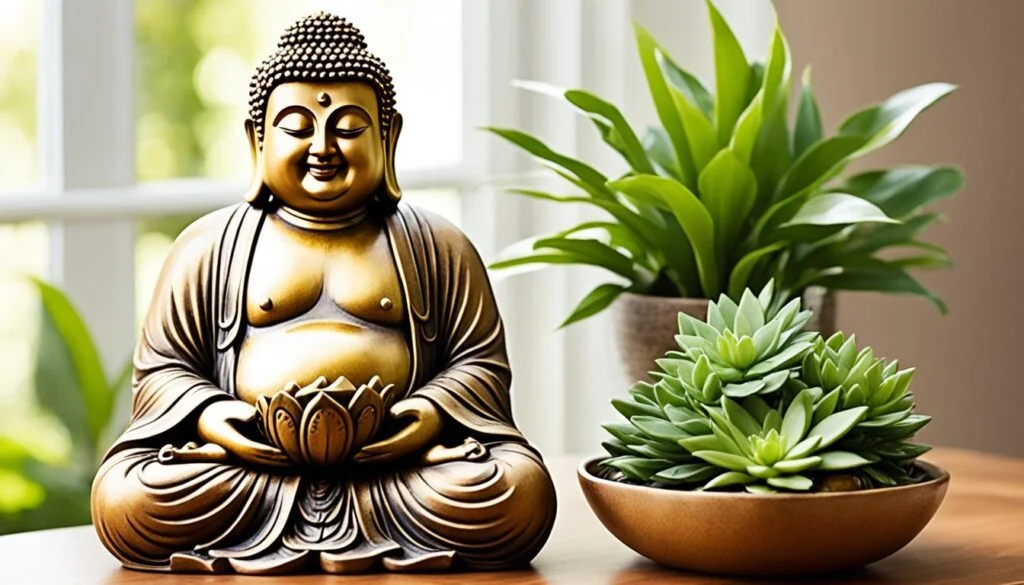
Key Takeaways
- It’s important to know the best spots for your Happy Buddha statue to create a positive home environment.
- Happy Buddha can improve focus, wisdom, wealth, and health when placed right, according to Vastu and Feng Shui.
- Finding the perfect spot for your Happy Buddha statue in your home attracts and keeps positive energy.
- Choosing where to place Happy Buddha in your home needs careful thought about the statue’s direction, room, and height.
- Adding a Happy Buddha statue to your home decor can turn your living space into a joyful retreat.
Understanding the Symbolism of the Happy Buddha
The Happy Buddha, or the Laughing Buddha, brings joy and wealth into homes worldwide. Its origin in Buddhist traditions makes it more than a simple decor item. It stands for good luck and prosperity.
The symbolism of the happy buddha is widely recognized, with 62% thinking it brings wisdom and fortune to their home. Additionally, 48% say it boosts psychological health, making homes peaceful for families.
The Origin and Cultural Significance of the Laughing Buddha
The cultural beliefs about laughing Buddha tell us about Budai, a beloved Chinese monk. His zest for life endeared him to many as a possible Maitreya, or future Buddha. His joyful look reminds us daily to cherish happiness.
Interpreting the Laughing Buddha’s Iconic Features
The round belly and joyful laugh symbolize plenty and happiness. Significance of happy Buddha features vary across different statues, each holding items like sacks or golden ingots.
These items, based on cultural beliefs, can enhance the statue’s effect based on its placement. For instance, the east may bring peace, and the northeast could attract luck.
| Feature | Symbolic Meaning | Placement Recommendation |
|---|---|---|
| Rounded Belly | Generosity and Abundance | Living Room |
| Hearty Laugh | Joy and Uplifting | Entrance Facing Inward |
| Carrying Sacks | Fortune and Wealth | Bookshelf in East Direction |
| Golden Ingots | Material Prosperity | Office or Business Premises |
| Beads | Meditation and Spirituality | Meditation Room or Space |
Choosing the right meaning of laughing Buddha statue can match your home and dreams. 77% enjoy these statues for their beauty and positive influence. By understanding the significance of happy Buddha features, we fill our homes with a figure that brings joy, inspiration, and guidance.
Feng Shui and the Power of Positive Spaces
Feng shui principles are not just about making a space look good. It’s about creating positive energy in your home. This brings happiness and harmony. The happy Buddha is a key symbol in feng shui. It is loved worldwide, sitting in homes and businesses.
The big belly Buddha statue is believed to boost financial success. This idea shows how our physical spaces can affect our mental health. Feng shui for happiness and harmony is popular. People want peaceful homes.
“Feng Shui advisers recommend placing the laughing Buddha statue in the living room for maximum benefit. Its presence is a constant reminder to harness joy and abundance in every aspect of life.”
Buddha statues do more than decorate. In the living room or on a car dashboard, they attract positive chi. They protect against stress and inspire success at work.
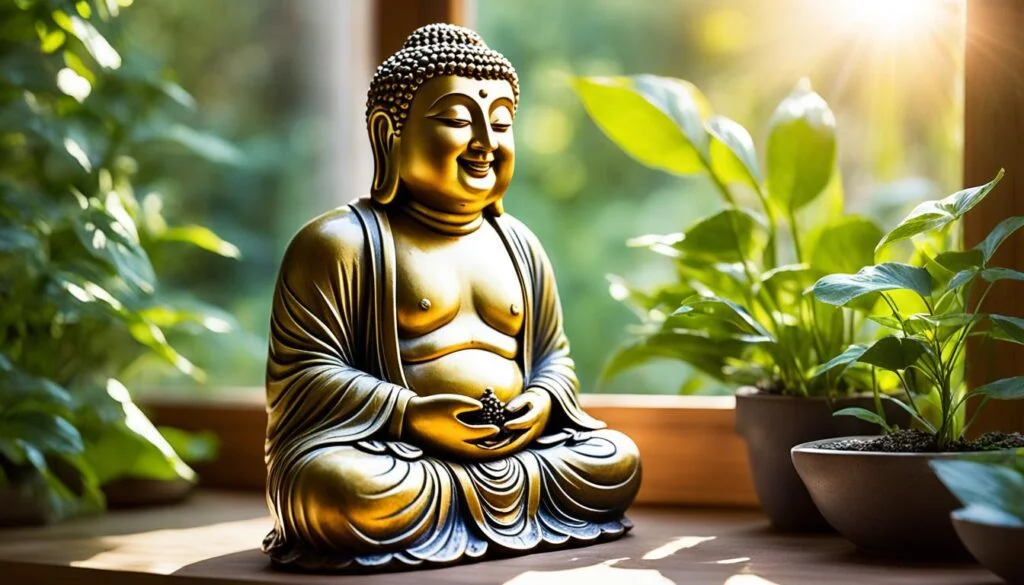
Feng shui experts, especially those practicing Flying Star Feng Shui, prefer brass or bronze Buddhas. These materials guard against negative forces like the ‘black and yellow stars’. The laughing Buddha guards against accidents, financial loss, and illness.
Understanding the feng shui principles of the Five Elements is crucial. Here’s a quick guide:
- Green and Brown symbolize Wood.
- Red and Strong Yellow define Fire.
- White and Gray stand for Metal.
- Light Yellow and Sandy tones represent Earth.
- Blue and Black are hues of Water.
Using these colors and placing feng shui symbols can improve life aspects. Like relationships, wealth, and health. Fu-dogs, Ducks, and Dragons are examples of these symbols.
Pairing symbols, like Fu-Dogs with ducks, can boost their effect. Tying colored ribbons—red for love, gold for wealth, blue for health—helps too.
But, be careful with where you place these symbols. Feng shui experts warn against the kitchen, bedroom, or bathroom. These areas have low energy. Proper placement is key for good chi and prosperity.
Feng shui invites us to live in harmony with the energies around us. It’s about attracting positive chi in home spaces. This celebrates the potential for harmony and prosperity in life.
Where should a Happy Buddha be placed in the house?
Finding the ideal placement for happy Buddha at home brings more than beauty. It attracts vital energy for wealth and joy. The Laughing Buddha holds a special place at home, work, and social places. Made of wood, metal, or porcelain, each material brings its unique vibe.
Choosing the best spot for happy Buddha statue mixes Feng Shui, Vastu Shastra, and your intentions. Vastu Shastra suggests the northeast for wealth, but you can adapt based on the room and your goals.
According to Feng Shui, a Laughing Buddha statue facing east cuts negativity. It boosts positivity, happiness, and harmony.
Picking the right spot for your Buddha means understanding what each pose means, like wealth or happiness. Below is a chart to help choose where to place your Laughing Buddha for the best effect:
| Room | Recommended Placement | Intended Benefit |
|---|---|---|
| Living Room/Dining Room | Southeast direction, facing south or towards main door | Brings wealth and social bonds |
| Study/Home Office | Standing Buddha on the desk or southeast corner | Boosts success and focus |
| Bedroom | In front of the main entrance or facing east for health | Enhances family well-being and peace |
| Entryway | Diagonally from the front door | Introduces good energies and wards off bad vibes |
For the happy Buddha placement in different rooms, keep it below eye level. Putting it higher is seen as rude and defeats its purpose. Choose your Buddha carefully, like one with bags for wealth in the living room or one with beads for peace and luck in quiet places.
The direction your Buddha faces is very important. For wealth, have it face the main door; for luck and harmony, east is best. The key is how the statue’s position, room’s goal, and your wishes come together for the perfect setup.
Selecting the Ideal Material for Your Happy Buddha Statue
When choosing material for Happy Buddha, it’s key to look beyond just looks. Traditional materials like bronze, wood, and stone have unique vibes. They can add special meaning to a Happy Buddha’s symbolism.

Bronze is a favorite for its detail and lovely aging process. Its glow and weight bring a solid, classic feel to your spiritual area.
Wood offers warmth and a natural feel. With types of Happy Buddha materials like teak and sandalwood, wooden statues bring peace to your home. Their soft colors and patterns fit any setting, making rooms peaceful and stylish.
Stone statues in marble or granite add a timeless touch. Indoors or outdoors, they blend with nature, showing Buddha’s lasting lessons.
Think about the vibe you want in your home as you select a laughing Buddha. Here’s a simple guide to pick your statue’s material:
| Material | Symbolism | Suitability |
|---|---|---|
| Bronze | Durability, tradition, intricate detail | Indoor placement for a historic and timeless look |
| Wood (Teak, Sandalwood, Ebony) | Warmth, natural beauty, organic harmony | Complements both modern and traditional decor |
| Stone (Marble, Granite, Sandstone) | Timelessness, strength, natural elegance | Outdoor gardens or as centerpiece in large spaces |
Real artistry means creators put their heart into their work. Picking such a statue ensures it reflects true peace and mindfulness.
- Most folks (90%) who cherish peace put a Buddha in the garden for quiet time.
- Feng shui suggests placing a Buddha statue facing your home, especially by entrances, to welcome good vibes.
- To respect their sacred importance, placing Buddha statues on altars is often advised.
When choosing, your Happy Buddha’s material should match your personal bond and the figure’s reverence.
Aligning Happy Buddha Placement with Feng Shui Directions
We explore using ancient Feng Shui wisdom in today’s living spaces. Knowing where to place the Happy Buddha statue can make your space harmonious.
Feng Shui may have skeptics, but it’s still a big part of culture, thanks to its ancient roots. Feng Shui directions for Happy Buddha placement attract interest from the wealthy to architects, aiming to bring prosperity and positivity.
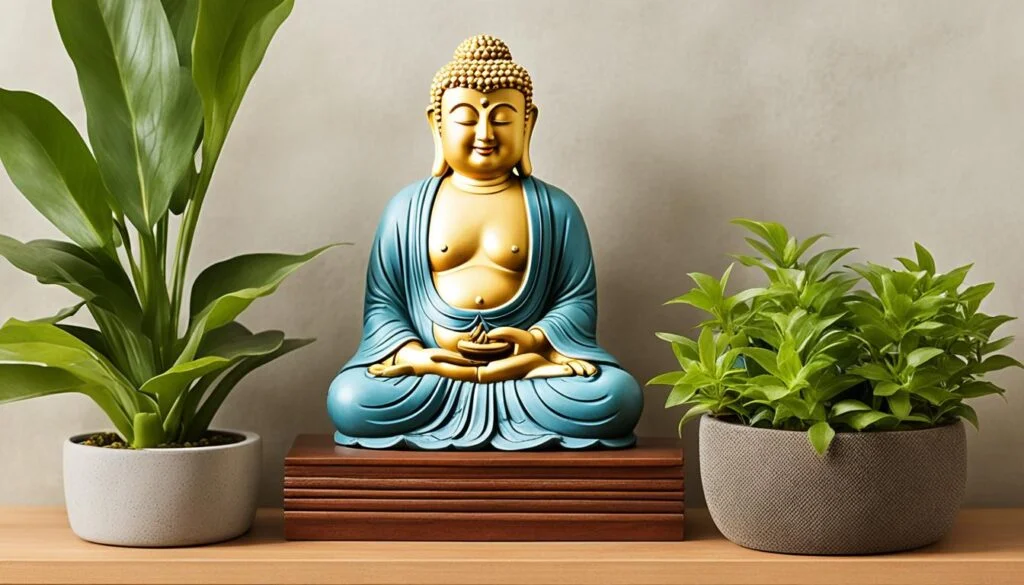
Orienting Your Statue for Wealth: The Southeast Direction
Want more wealth? Place your Happy Buddha in the southeast. This custom comes from old practices where cosmic harmony was essential. Instruments like Feng Shui compasses confirmed this practice, highlighting the southeast’s significance.
Positioning for Prosperity: Aligning with the Front Door
Your home’s entrance is key for positive energy, making it perfect for your Happy Buddha. By placing it here, luck and opportunities are believed to enter your home. This approach is popular in Feng Shui friendly places like Hong Kong and Singapore.
Enhancing Family Harmony: Buddha in the East
To improve family peace, place the Happy Buddha to the east. This practice, valued from the Late Qing dynasty through today, aims to strengthen family ties. Even in tough times, Feng Shui’s flexibility and its ability to promote harmony have been cherished.
Below is a table summarizing Feng Shui principles alongside the Happy Buddha to help clarify how each placement serves its purpose:
| Direction | Objective | Auspicious Placement of Happy Buddha | Feng Shui Tips for Attracting Prosperity |
|---|---|---|---|
| Southeast | Wealth and Abundance | Position statue facing Southeast | Include elements like water fountains and coins |
| Front Door | Prosperity and Luck | Place near the entrance to welcome chi | Use mirrors to reflect positive energy inward |
| East | Family Harmony | Orient in an easterly place within the home | Surround with plants and wood elements for growth |
When applying these feng shui tips for attracting prosperity, your intentions matter a lot. Combining proper placement with a positive mindset boosts energy flow. This attracts success and abundance to your living or working spaces.
Maximizing Chi Flow in Your Living Room
Your living room is the heart of your home, a place where life’s energies meet. Applying feng shui for living room practices can make this space thrive with chi flow in home.
This approach isn’t just for looks. It’s about creating positive energy in social spaces. This energy improves both your social times and your relaxation.
Strategic Placement for Social Spaces
In feng shui, balance is key. You might place a citrus tree in the southwest for luck, or mountain art for health. Natural light is also crucial, far better than artificial. These elements help maintain balance in your living room’s energy.
Avoiding Common Feng Shui Missteps
Yet, achieving balance can be tricky. Common feng shui mistakes to avoid are letting clutter accumulate and placing mirrors wrongly. These can block or disrupt chi. Knowing the deep roots and details of feng shui helps avoid these issues. Experts suggest clever storage for clutter and using mirrors to enhance light.
Following these expert tips, your living room becomes more than just a space. It turns into a sanctuary of peaceful energy and balance.
Happy Buddha Placement Tips for Office and Work-spaces

Having the right feng shui in your office can create a space full of productivity and success. Both Vastu Shastra and Feng Shui show us how our work areas can benefit, not just our homes. They suggest that a well-placed Happy Buddha statue helps make a positive work environment.
Different Buddha statues bring different vibes. For example, the Laughing Buddha is all about joy and wealth. It works best when it faces the main entrance of your office, welcoming luck and prosperity.
Fostering a Calm and Productive Atmosphere
Placing a Meditation Buddha in a quiet spot can make your office calmer. This encourages deep thinking and attention—a key to attracting success and productivity. For the best energy, experts say to face Buddha statues east. This brings peace and focus all day.
Laughing Buddha by Your Desk: A Symbol of Success
Want a reminder of your aims? Put a Laughing Buddha near your desk. According to Feng Shui experts, it should be high but not overhead. This shows respect and taps into feng shui for office harmony.
Position matters, but so does cleanliness and understanding what the Buddha means. Add this symbol of plenty to your space. You’ll see its quiet but powerful impact on making a positive work environment.
Placing the Buddha on a clean pedestal, away from clutter, honors the Master. It also boosts positive chi flow.
Bedroom Arrangement for Peace and Relaxation
It’s important to make your bedroom a calm haven for your health. Feng shui for the bedroom is key in this process. Vastu Shastra and Feng Shui teach us our surroundings can change how we feel. This is especially true for the happy Buddha placement in the bedroom.
The bedroom is vital for rest and should get extra focus.
A Happy Buddha that brings joy and wealth is perfect. It should be placed to the east and up high for a peaceful bedroom space.
Picking the right Buddha for your bedroom is about what you want to feel there. A meditating Buddha helps you relax, while a laughing one makes you feel happy.
Yet, it’s important to place these symbols respectfully. They should not be on the floor or near dis-respectable areas like the bathroom or storage.
A Happy Buddha in your bedroom is more than decoration; it’s about making a space where positive energy flows freely, helping both mind and soul.
Keep the area around your Buddha clean to keep the energy flowing right. This helps make the Buddha a central point of peace. Also, the Buddha’s material should comfort you and match the room.
- A wood carving adds nature and warmth.
- Metal statues are shiny and modern.
- Stone statues give an earthy, steady feel.
The aim is to make your bedroom a personal safe space. It’s not just where the Buddha goes but also about mixing the five elements right. The room should help your sleep and relaxation times.
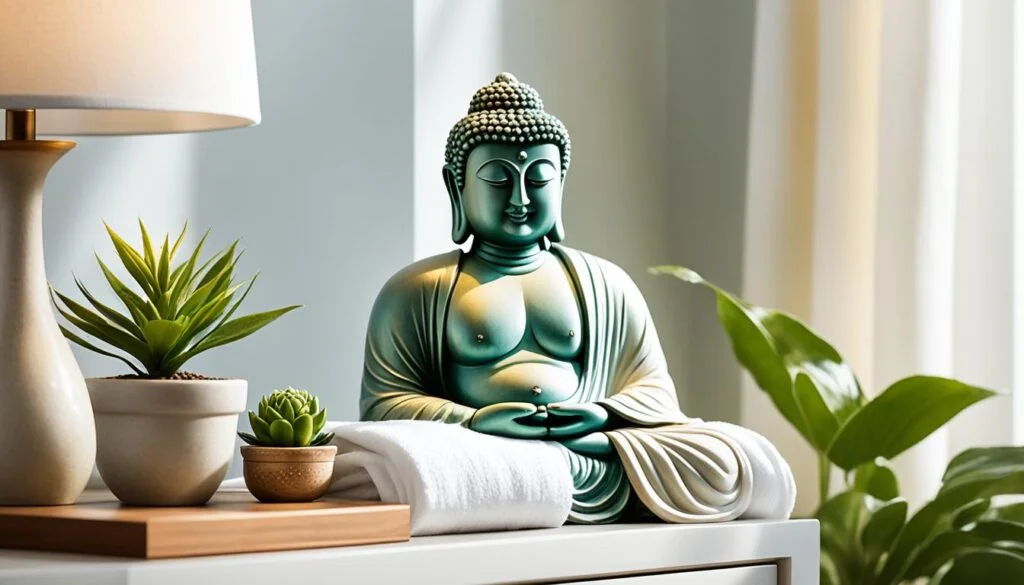
Giving Buddha statues as gifts is popular, hoping for peace and joy for the receiver. When adding a Happy Buddha to your space, wish for harmony and calm. The spot you choose matters as much as the Buddha’s type, each with its own spiritual role.
In closing, placing a Happy Buddha in the bedroom is a mindful act with big effects. It’s not only for Buddhism followers but for anyone. The statue is a daily nudge towards peace and a positive life path.
Choosing the Perfect Happy Buddha for Your Home Aesthetic
When picking a happy Buddha statue for your home, think about your decor style. The Happy Buddha should bring joy and fit well with your home’s look. It’s important to match the Buddha’s style with your home, whether it’s minimalist, modern, or classic.
We’ll show you how to pick the right style and size for your home. We have a table to help you decide.
Style Compatibility with Your Home Decor
Happy Buddha statues vary in style, from detailed carvings to simple shapes. Pick a statue that matches your room’s vibe. For example, a detailed Buddha works in a fancy room, while a simple one fits better in a minimal space.
Size Considerations for Harmonious Design
The size of your Buddha statue is key. A big statue might be too much, and a small one might not get noticed. Think about your room’s size and furniture to choose a statue that’s just right.
| Home Area | Recommended Buddha Type | Height Placement | Symbolic Benefit |
|---|---|---|---|
| Entrance Door | Protection Buddha | Above 3-4 feet | Blessings and Protection |
| Living Room (West Facing) | Reclining Buddha | Eye-level | Peace and Harmony |
| Garden Area | Meditating Buddha | Ground level on a mat | Peaceful Environment |
| Study Room | Bhumisparsh Buddha | Desk or shelf level | Focus and Academic Success |
| Office | Businessman Buddha | Eye level or above | Financial Stability |
Following Vastu and feng shui can also help place your Happy Buddha. Ancient wisdom suggests 87 spots in a home for different benefits. Look at these to find the best spot for your statue.
Choosing a Happy Buddha is about more than looks; it’s about creating a positive space. Take your time to find a statue that reflects your style and goals. The right Happy Buddha will bring happiness and fit beautifully in your home.
What to Avoid When Placing Your Happy Buddha
Choosing the right spot for your Happy Buddha statue isn’t just about looks, it’s about spirit. It’s important to find the perfect spot to bring in good vibes.
At the same time, it’s critical to avoid places that might bring bad energy or disrespect to your Laughing Buddha. Some areas in the house might not be good for the statue.
Understanding Inauspicious Happy Buddha Placement
Don’t put the Laughing Buddha on the ground or somewhere low. This is seen as disrespectful and might stop it from bringing good energy. Keep it away from shoes and don’t just use it as decoration in places that don’t fit its importance. Instead, put it on a table or altar to show respect and let it bring positivity to your home.
Being careless with your Happy Buddha, like putting it in a safe, shows a lack of respect. A better place is on an enclosed shelf which shows you value and protect it. This is how you show respect.
The direction your Buddha faces is very important in feng shui. In a car, it should face the front to help move your life forward to prosperity. In a garden, it should look towards your house to bring abundance home.
Don’t forget about the material of your Buddha or the meaning of its hand gestures. Wood and metal Buddhas work best in certain directions. Also, the mudras, or hand gestures, have special meanings that should match the area they’re in.
Maintaining Cleanliness and Respect Around Your Statue
Keeping your Happy Buddha clean and respected is key. Dust and ignoring it can block good vibes, so upkeep is important. It’s not just about cleaning—the area should be tidy to keep the statue’s power strong.
Placing red paper under your Buddha can increase luck. But the way it’s made matters too. A Buddha made with care and true to the teachings is more powerful than one made without any connection to its origins.
Bringing a Buddha statue into your home brings many benefits. But remember, its placement is important to keep the Laughing Buddha’s spirit happy. Avoid bad spots or arrangements that could lower its positive impact. This helps keep the Happy Buddha’s energy strong in your life.
The Impact of the Happy Buddha on Home Dynamics
Adding a Happy Buddha to your home is more than just for looks. It changes the vibe of your living space. The impact of happy Buddha on home dynamics goes deep. It makes your home feel more harmonious and welcoming.
Nurturing Domestic Happiness and Contentment
The home is a haven from outside stress for many. The Happy Buddha symbolizes home happiness. Fostering domestic happiness and contentment with the Happy Buddha comes from its history.
It’s known to bring good luck and shows the joyful parts of life. Putting it in common areas reminds us to find joy and stay positive at home.
Laughing Buddha as a Source of Inviting Positive Energy
The Laughing Buddha isn’t just a figure to make us smile. It’s a source of inviting positive energy with laughing buddha. It turns our home into a place full of hope. It fills your home with a vibe that improves how you feel.
The Happy Buddha shows the kind of calm and friendly home you want to have. It represents the laughter and joy of life.
Conclusion
Adding a Laughing Buddha statue to your home does more than just look nice. It connects you to ancient traditions of joy, prosperity, and peace.
This symbol is loved worldwide, from China to the Western world. When choosing one, think about how it fits with your style and the energy flow advice from Feng Shui and Vastu Shastra.
The right spot for your statue, like one with a sack, beads, or a Buddha with children, boosts harmony in your space.
By placing it correctly, following guidelines like keeping it above three to four feet from the door, you invite peace and the spirit of Buddha’s teachings into your home. Details matter, like setting a meditating Buddha to face east, or hanging a Buddha painting over your dining table.
In the end, combining beauty with positive vibes in your home brings the Laughing Buddha’s promise to life. This symbol not only decorates but also points the way to enlightenment and inner calm.
Let your statue be a sign of your commitment to making your home a place of joy, wealth, and wisdom.
FAQ
Where should a Happy Buddha be placed in the house?
Placing a Happy Buddha in your home varies by room. In the living room, the southeast corner is best for wealth. In the bedroom, put it on a bedside table to help with sleep. In the office, near your desk helps with success.
What is the significance of the Happy Buddha?
The Happy Buddha stands for joy, wealth, and contentment. Its cheerful look, round belly, and hand gestures symbolize abundance and blessings. Keeping one at home is thought to attract good vibes and prosperity.
How does feng shui affect the placement of a Happy Buddha statue?
Feng shui uses directions to enhance an object’s energy. With Happy Buddha, southeast brings abundance, and the entrance attracts prosperity. This alignment boosts your home’s positive energy.
What materials are commonly used for Happy Buddha statues?
You’ll find Happy Buddha statues in metal, clay, wood, or stone. Each material lends different vibes, like metal for strength, clay for grounding, wood for growth, and stone for endurance. Pick the material that fits your decor and feels right to you.
What common mistakes should be avoided when placing a Happy Buddha statue in the living room?
In the living room, keep the space around the statue clear. Don’t put it in direct sunlight or by the front door. And it’s disrespectful to place it on the floor. These tips help maintain a harmonious living room.
How can a Happy Buddha statue enhance productivity and success in the office?
A Happy Buddha in the office brings calm and focus. Place it near your desk or in the southeast corner for prosperity. It reminds you to stay positive and work towards your goals. This fosters a productive and successful work environment.
Can a Happy Buddha statue improve sleep quality in the bedroom?
Yes, it can. Place the Happy Buddha where you can see it from bed. Its serene look boosts tranquility and sleep quality. This helps make your bedroom a peaceful retreat.
How do you choose the perfect Happy Buddha statue for your home?
Match the Happy Buddha’s style with your home decor. Think about the statue’s size too; small for tight spots, large for open areas. The right style and size enhance your home’s look and balance.
Are there any inauspicious locations where a Happy Buddha should not be placed?
Don’t place it in bathrooms or laundry rooms. These are for cleansing negative energy. Also, avoid the floor, which is disrespectful. Keep the statue clean and in good shape to preserve its energy.
How can a Happy Buddha statue contribute to domestic happiness and contentment?
The Happy Buddha brings a vibe of joy and prosperity to your home. It promotes happy relationships, laughter, and fortune. Its positive presence enriches the home with happiness and satisfaction for everyone.
Source Links
- https://www.architecturaldigest.in/story/11-lucky-placements-buddha-statue-for-vastu-home-feng-shui/
- https://timesofindia.indiatimes.com/life-style/home-garden/7-vastu-recommended-places-to-keep-a-buddha-statue-at-home/photostory/83628149.cms
- https://www.fnp.com/article/how-to-place-buddha-statue-for-home-vastu
- https://housing.com/news/buddha-statue-for-home/
- https://www.thebuddhagarden.com/where-to-place-buddha-statue.html
- https://timesproperty.com/news/post/laughing-buddha-meaning-blid2541
- https://www.articlesfactory.com/articles/metaphysical/feng-shui-and-the-happy-buddha.html
- https://www.fnp.com/article/best-ways-of-inviting-good-feng-shui-energy-in-your-house
- https://www.nobroker.in/forum/what-direction-should-laughing-buddha-face-in-a-home/
- https://www.originalbuddhas.com/blog/a-guide-to-choosing-and-buying-authentic-and-perfect-buddha-statue
- https://www.thestonestudio.in/buddha-placement-in-garden/
- https://en.wikipedia.org/wiki/Feng_shui
- https://www.blogbrandz.com/tips/feng-shui/
- https://www.rd.com/list/feng-shui-items-for-good-health/
- https://www.estheticplanners.com/blog/things-to-remember-when-placing-a-buddha-statue-in-your-homeworkplace
- https://www.livspace.com/in/magazine/where-to-keep-buddha-statue-in-the-house
- https://www.nepacrafts.com/blogs/blog/how-to-choose-the-right-buddha-statue-for-home
- https://en.wikipedia.org/wiki/Gautama_Buddha
- https://www.artisanscrest.in/blogs/artisan-of-the-month/the-dos-and-don-t-s-while-placing-buddha-statues-as-home-decor
- https://www.propertyok.com/blog/laughing-buddha/
- https://www.crisisgroup.org/asia/south-east-asia/myanmar/290-buddhism-and-state-power-myanmar
- https://www.theguardian.com/books/2012/apr/08/buddha-in-attic-julie-otsuka-review
- https://www.worldhistory.org/Siddhartha_Gautama/
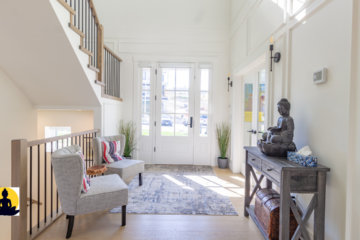

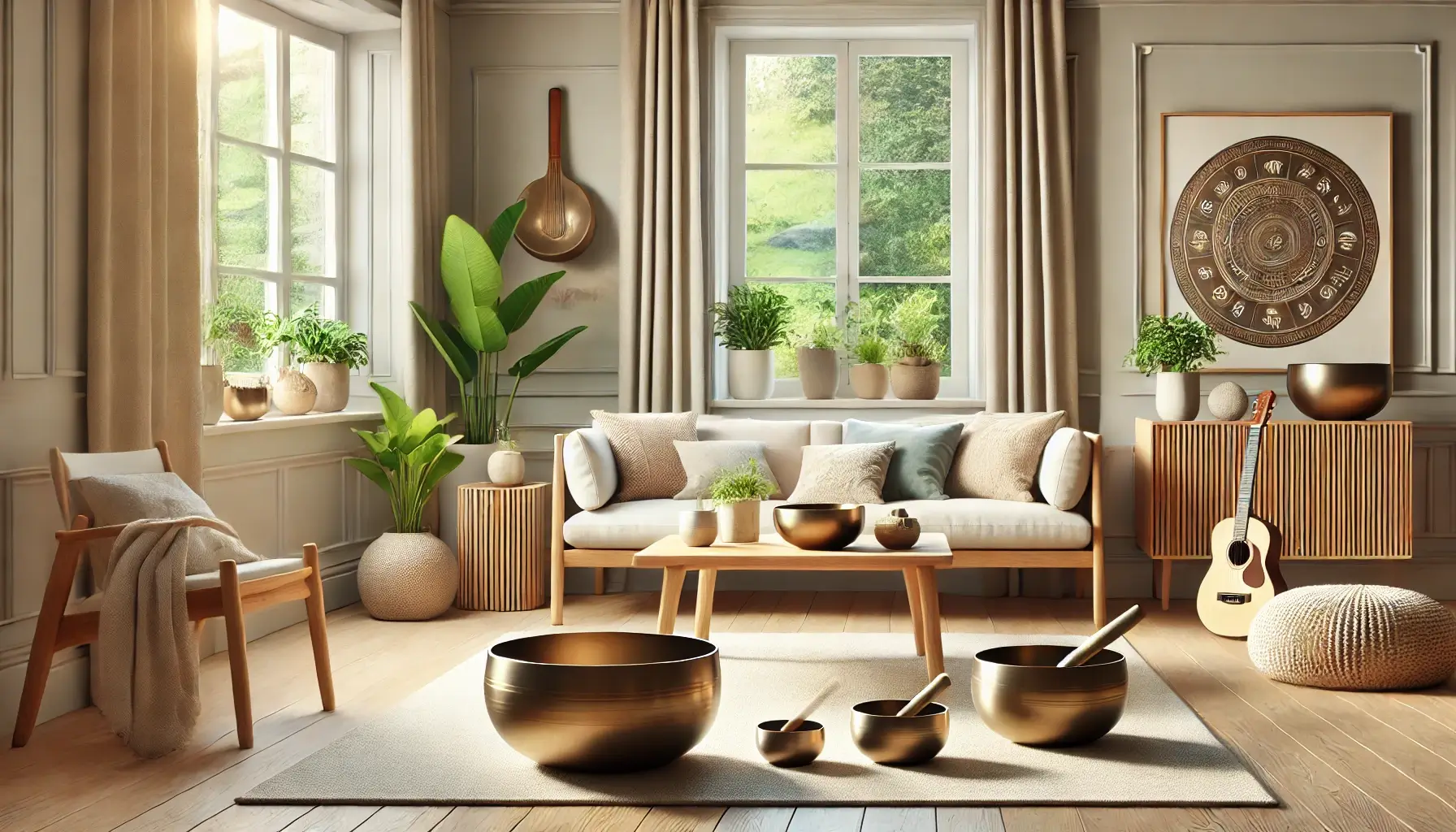
0 Comments